Evapotranspiration and water use of full and deficit irrigated cotton in the Mediterranean environment in northern Syria

Authors:
Cotton (Gossypium hirsutum L.) is the most important industrial and summer cash crop in Syria and many other countries in the arid areas but there are concerns about future production levels, given the high water requirements and the decline in water availability. Most farmers in Syria aim to maximize yield per unit of land regardless of the quantity of water applied. Water losses can be reduced and water productivity (yield per unit of water consumed) improved by applying deficit irrigation, but this requires a better understanding of crop response to various levels of water stress. This paper presents results from a 3-year study (2004–2006) conducted in northern Syria to quantify cotton yield response to different levels of water and fertilizer. The experiment included four irrigation levels and three levels of nitrogen (N) fertilizer under drip irrigation. The overall mean cotton (lint plus seed, or lintseed) yield was 2502 kg ha−1, ranging from 1520 kg ha−1 under 40% irrigation to 3460 kg ha−1 under 100% irrigation. Mean water productivity (WPET) was 0.36 kg lintseed per m3 of crop actual evapotranspiration (ETc), ranging from 0.32 kg m−3 under 40% irrigation to 0.39 kg m−3 under the 100% treatment. Results suggest that deficit irrigation does not improve biological water productivity of drip-irrigated cotton. Water and fertilizer levels (especially the former) have significant effects on yield, crop growth and WPET. Water, but not N level, has a highly significant effect on crop ETc. The study provides production functions relating cotton yield to ETc as well as soil water content at planting. These functions are useful for irrigation optimization and for forecasting the impact of water rationing and drought on regional water budgets and agricultural economies. The WPET values obtained in this study compare well with those reported from the southwestern USA, Argentina and other developed cotton producing regions. Most importantly, these WPET values are double the current values in Syria, suggesting that improved irrigation water and system management can improve WPET, and thus enhance conservation and sustainability in this water-scarce region.
